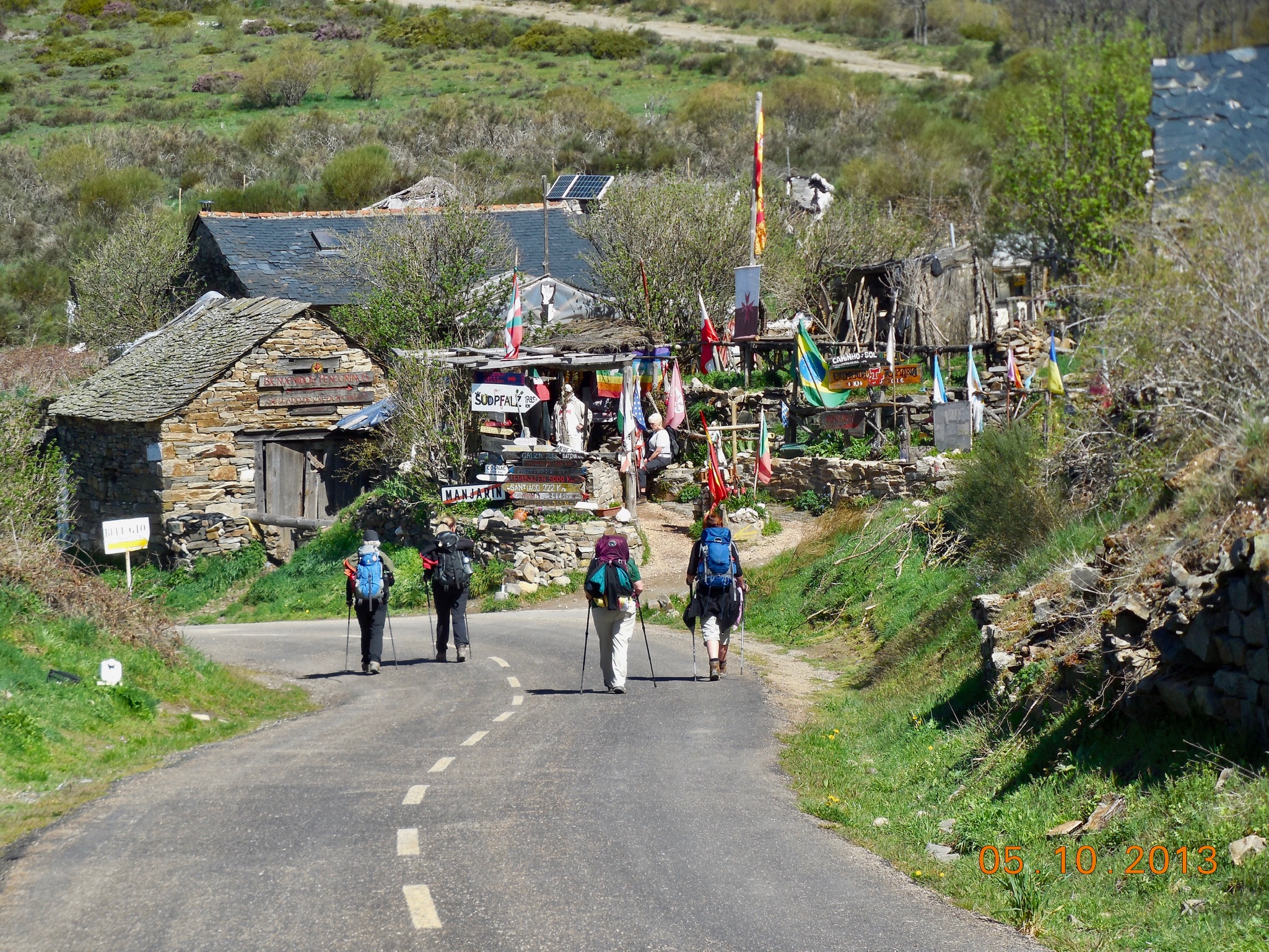
Over the course of the weeks that we walked the Camino in 2013 I kept notes which I “wrote” one finger stroke at a time on my tiny iPod-touch. Some notes were lengthy essays, some just short memos, and others merely providing links to photographs taken that day. I shared these missives with friends and relatives by email and on Facebook. Fortunately, I archived these notes. They have proven to be a trove of long forgotten information, valuable in the creation of these detailed posts. The preceding post and what follows below are two of these essays. They are presented verbatim in order to provide further insight into my thoughts and our experiences.

“What is a Peregrino.” Written May 14, 2013 at Alto do Poio, Spain.
On the Camino, we are confronted each day with carved and painted images of St. James, the original Peregrino.

Even though these are often stylized portrayals, if he walked the Camino today there would be no mistake that he is a Pilgrim. Here is a quick summary of his “qualifications”:
- Practical Shoes. St. James is usually shown wearing sturdy leather boots, shoes, or sandals. Modern Pilgrims are no different, if you discount the “Crocs” that are worn by some in the evening.
- A wide brimmed hat. This important piece of equipment protects the head and eyes from the sun’s assault, the discomfort of rain, and also provides warmth in the morning and evening. Modern Peregrinos usually wear hats. Check!
- A weatherproof cape. This simple ankle length woolen cloak sheds rain, is vented, and doubles as a sleeping blanket. Today, we separate these functions among a poncho, windbreaker, and sleeping bag. For those focused on an ultralight pack, St. James may have had the better idea.
- A hiking stick. Modern Pilgrims seem equally divided in preference between going “stickless”, using St. James’ classic single walking stick, and employing twin trekking poles. St. James didn’t have the chance to evaluate the latter option.
- A water vessel. If the images are to be believed, St. James carried a hollow gourd to transport his drinking water, a simple and eco-friendly solution. He might have smiled upon the modern Camelbak, but I think he would have been appalled by the throwaway plastic bottles that dot the Camino.

These are the essentials for a Peregrino, then and now. The modern Pilgrim may stress over packs, socks, GPS, cell phones and Wi-Fi, but St. James might have seen such items as more a distraction rather than an aid to his journey. I admit that on these matters I often fell to the temptations of the “just in case” dark side.
A few days ago I was presented with another view of who is a Peregrino. During evening Vespers at a monastery, a Monk delivered a brief, but powerful message. He cautioned us to be mindful that Christ walked the Camino. He added that Jesus was disguised as a Pilgrim, and that Our Lord was careful not to announce His identity. I accepted the Monk’s admonition as a homilist’s metaphor. However, the message has been working on me as I find myself thinking as I pass Pilgrims on the Camino, “What if she…, or he…?”
I find that his words have caused me to be a bit more sincere and thoughtful when I say “Buen Camino”, perhaps a little kinder, maybe a little less inclined to judge, exercising more patience.
That Monk and the “disguised Peregrino” that he dedicates his life to serve are indeed intriguing.
Peace Everyone. Have Fun, Do Good, and Be Safe! And of course, Buen Camino! Pete

Ron Ninemire says:
I enjoyed reading the essays. Thanks Pete and fellow pilgrim, Christina, for sharing!
Pete Schloss says:
Thank you so much Ron! This has been a labor of love.